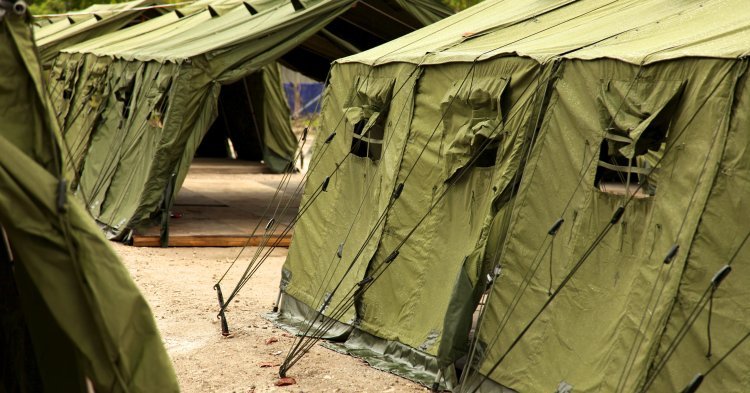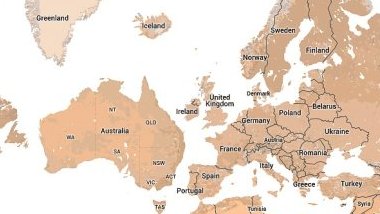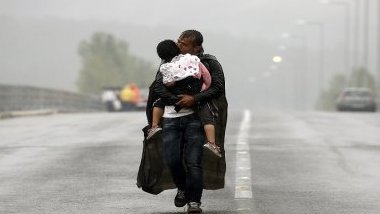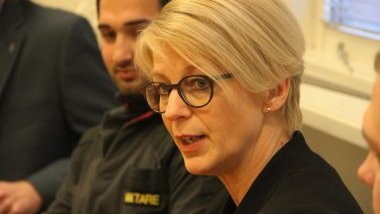This sentence, combined with an insistence that Europe ought to follow in Australia’s shoes, stirred up a stubborn engagement that still drives me. What an outrageous statement, I thought. What a convulsive way of thinking about asylum policy! Young people (or simply “kids”) have every right and reason to engage in exactly this field of policy, and in our times we should be inclined all the more. You might even say it is our responsibility to engage and speak up.
In recent debates, Australia has been highlighted by several prominent figures in Europe as a model for successful asylum policy. Former Prime Minister Tony Abbott toured Europe in 2016 brandishing his country’s approach to the so-called “boat people” (migrants arriving by boat). He famously expressed that Europe’s “love your neighbour” principle is a “catastrophic error”. The Australian model of ‘offshore processing centres’ has since circulated widely as a viable option for Europe to deal with immigration across the Mediterranean. This model has gained momentum as asylum policy has reached the top of the European agenda, reaching a climax the last weeks. While not openly inspired by Australia, the idea of establishing permanent resettlement camps outside of Europe, and the idea to “stop the boats”, are mirroring the Australian approach. Here, however, I seek to explain exactly why the ‘Australian model’ will not cut it for Europe.
Defending Australia’s sovereign borders
The Australian Border Policy started with ‘the Pacific Solution’ in 2001, when arrivals by boat to the northern shores of Australia picked up drastically. Australia signed an agreement with its impoverished northern neighbours Papua New Guinea and Nauru to use remote islands for hosting asylum seekers who arrive in Australia by boat. Originally refugees from Afghanistan setting off from Indonesia in fragile boats, the first arrivals caused a political uproar in Australia, leading to an increasingly militarised northern border. The agreements with PNG and Nauru were renegotiated by the new government in 2008, and permanent offshore detention centres were established on the islands of Manus and Nauru. All asylum applicants arriving in Australian waters would be sent to these islands to get their asylum claims processed. With the election of the conservative government of Tony Abbott in 2013, the policy branded ‘Operation Sovereign Borders’ included a clause that prevented boat arrivals from ever being granted Australian residency. A neat YouTube video entitled “No Way. You will not make Australia home” was released by the Australian Border Force.
While highly criticised by civil society and human rights groups, the policy was branded a success when arrivals by boat were reduced from 355 in the month of December 2013 to no more than one boat in 2015, according to some estimates. During this period, drowning at seas was also significantly reduced, bolstering calls to continue the operation. This mainly military operation was underpinned by a high navy presence with gunboats patrolling Australian seas 24/7 and pointing loaded guns towards unwarranted boats. Migrants intercepted were immediately shipped to one of the two detention centres, no questions asked. As a result, asylum seekers have been stranded at the two Remote Processing Centres (RPCs) at Manus and Nauru islands for up to 10 years without having their asylum claims assessed. More than 50% of detainees have been assessed by independent supervisors to be of refugee status. Manus Island was a male-only camp that hosted up to 900 migrants at its peak in 2016. On Nauru there are 219 being processed today, according to official records, among them several women and children.
This policy has become the heart and centre of Australian immigration policy and has turned into a political minefield where no politician dare enter. First bolstered as a key campaign promise in Abbott’s 2013 election campaign, incumbent Prime Minister Malcolm Turnbull is unable to meaningfully alter the policy in fear of a backlash from his party and voters. Since its failures in the early 2010s, the Labor party has turned unwilling to discuss political alternatives. Heavily criticised by human rights groups and the UN Human Rights Commission, and deemed illegal by the Constitutional court of Papua New Guinea, the government has had little choice but to rein in parts of the original set-up. Asylum claimants kept at Manus Island were moved in late 2017 and the government has sought new resettlement schemes in the region.
Two similar issues, two very different contexts
Even if humanitarian costs were to take second order, the Australian model will seem unattractive to Europe. Many will contend that Europe faces many of the same challenges that Australia has faced over the last two decades. After all, most of the irregular migration inflow to Europe goes through the harsh and merciless waters of the Mediterranean in fragile boats, operated by sophisticated people-smuggling networks. One tragedy undeniably shared with Australia is the number of deaths at sea. Most people would agree we need to discourage people from setting out on the dangerous journey across the ocean in the first place. Why then do I conclude that Australia’s decades-long border policy experiment won’t do as a policy blueprint for Europe?
First, it is the sheer size of Europe’s external borders. Australia is a single-island nation with a distance of more than 250 kilometres to its closest neighbour in Papua New Guinea. If we add that almost all boat arrivals in the recent years have set out from the Indonesian island of Cisarua or Batticaloa in Sri Lanka towards a small space of the Australian coast or their overseas satellite islands such as Christmas Island, the picture turns out to be quite different. Migrant routes into Europe go through at least eight different border crossings including the Mediterranean. The route from Turkey to Greece used to be the most popular one until the agreement with Erdogan’s government was reached in 2016. In the Mediterranean especially, the myriad of sea routes employed are hard to pinpoint, not the least monitor. Moreover, the scale of potential arrival numbers dwarfs the Australian case. While Australia received at the most 20,600 throughout 2013, Europe received more than 1 million over 2015. So far in 2018, there have been 54,500 migrants arriving by sea to Europe, according to the UNHCR.
The second point is that of a very different political and legal situation. Australia is a single nation-state with a federal government that enacts laws upon its 7 states and territories. All Australian border patrol operations are operated by the Australian Navy under the (former) Department of Immigration and Border Protection. All of Australian asylum and immigration policy is centralised under this department and a single Agency. The EU is a union of 28 countries and has no single immigration or asylum policy. Border patrols are overseen either unilaterally by the Mediterranean countries or by the fairly weak supranational structure of Frontex. Agreement on a single front on an unconditional turn-back policy among the 28 member-states seems highly unlikely.
Thirdly, Australia has – again unilaterally – made agreements on refoulement of asylum applicants with (overseas) neighbouring countries that have a long historical connection to the country. The EU has made one such deal, with Turkey, which is highly contested and is seemingly trying to negotiate a similar one with Libya. When Italy tried to negotiate a similar agreement with Libya in 2009, it was suspended in 2012 by the European Court of Human Rights, as it infringed the European Convention of Human Rights by failing to protect people from persecution and torture. Australia’s corresponding refoulement and processing agreements are flailing due to increasing pressures from within the recipient countries, and if these countries do hold on to the agreements, it is solely due to an unhealthy dependence on aid.
Australia’s agreement with Cambodia to host migrant arrivals has flopped severely with refugees politely declining the offer to relocate to a country more impoverished than the one they just fled from. Australia’s ‘Stop the boats’ policy is now hinging on an offer made by then-US president Barack Obama to resettle Manus Island refugees, which is now on the ropes with Donald Trump in the White House.
Making Australia a lesson for Europe
Then ultimately, what can Europe take from Australia’s Operation Sovereign Borders? First of all, a heavy-handed top-down solution, as was imposed by the Australian federal government, won’t work for Europe. All member states (and their constituencies) need to be on board and engaged in shaping a common asylum and border policy. Secondly, when trying to control boat arrivals across the Mediterranean sea, the means we use to that end still matter. Simply shipping asylum-seekers offshore to be someone else’s problem won’t be a long-term sustainable option. Europe needs to partner with neighbouring countries around migrant routes, not exacerbate the dependency-based relationship to already heavily strained countries.
Most importantly, this debate requires engaged young people that refuse to ‘sit quietly under a tree’ and not let the meanest voices dictate the priorities. Asylum policy is about the right of young people to grow up in a safe place without fear of persecution, regardless of their background. Asylum policy is about international solidarity. First and foremost, European asylum policy is about working together to solve one of the greatest challenges of our time.





Follow the comments: |
|
